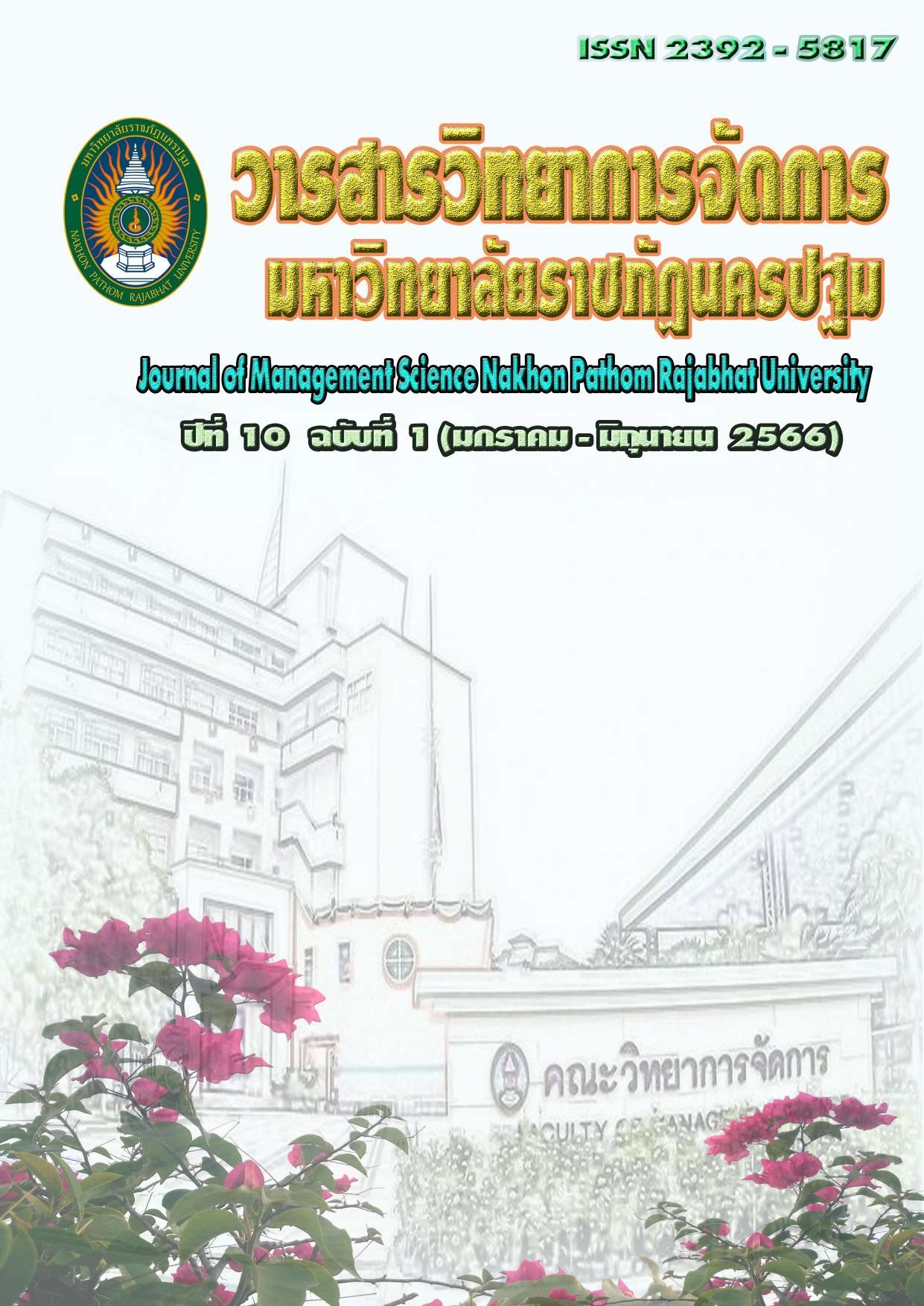Transition from e-government to digital government: A case study of the Revenue Department, Department of Land Transportation and Department of Rural Roads
Main Article Content
Abstract
This research aims to 1. study the transition of the Thai public administration system from e-government to digital government in terms of public service delivery, 2. study problems and obstacles in the delivery of public services. 3. compare the effects of the transition from e-government to digital government that affects the delivery of public services; 4. study the development of government services that affect the delivery of public administration.
The research methodology used a qualitative case study approach, with in-depth interviews from 3agencies: The Revenue Department, The Department of Land Transport and The Department of Rural Roads
The research findings were as the following:
1) the transition from e-government to a digital government has resulted in the delivery of public services becoming more convenient, efficient, and time-saving. The previous approach required individuals to fill out forms and physically visit government agencies to request services. With the new digital format, service recipients can now carry out various transactions through platforms such as Line, leading to increased convenience, speed, time efficiency, and cost-effectiveness in service requests.
2)The transition from e-government to digital government has problems and obstacles as follows:(1) Problems in information technology readiness and budget (2) The problem of creating understanding and coping with changes among operators and service users (3) Problems in integrating and linking information with other sectors (4) Legal limitations that are not conducive to development; and (5) Lack of personnel with expertise in information technology system development and service personnel.
3)The comparison of the transition from e-government to a digital government, regarding the impact on the delivery of public services by three government agencies, reveals that they are aligned and moving in the same direction. The transition is characterized by service improvement and the integration of technology in the provision of public services to the general public, private sector, and others. There is also a consolidation of data connectivity among government agencies.
4) Development guidelines focus on enhancing the skills and knowledge of personnel through training and knowledge-sharing initiatives. This approach is essential to address the common issue identified in all three case studies, where the majority of the workforce lacks job-specific skills in service-oriented tasks and there is a shortage of specialized experts. Additionally, the management of knowledge within the organization needs improvement to facilitate collaborative innovation.Keywords:Transition, E-government, Digital government, public service
Article history: Received 9 May 2023
Revised 11 June 2023
Accepted 12 June 2023
SIMILARITY INDEX = 2.32 %
Article Details

This work is licensed under a Creative Commons Attribution-NonCommercial-NoDerivatives 4.0 International License.
The views and opinions of the article appearing in this journal are those of the author. It is not considered a view and responsibility of the editorial staff.
References
ิพวรรณ หล่อสุวรรณรัตน์. (2559). รัฐบาลอิเล็กทรอนิกส์ = E-Government. คณะรัฐประศาสนศาสตร์
สถาบันบัณฑิตพัฒนบริหารศาสตร์.
ธีระ กุลสวัสดิ์. (2555). แผนพัฒนาดิจิทัลของกรมการขนส่งทางบก. วารสารการเมือง การบริหาร และกฎหมาย,
(1),159-195.
ส านักงานพัฒนารัฐบาลดิจิทัล. (2558). รายงานผลการส ารวจเว็บไซต์ของหน่วยงานภาครัฐ ปี พ.ศ.2558.
[ออนไลน์].ค้นเมื่อ 10 ธันวาคม 2565, จาก https://www.dga.or.th/wpcontent/uploads/2015/10/ file_508edcd748da3eb726067c54881614b8.pdf
ส านักงานพัฒนารัฐบาลดิจิทัล. (2559). แผนพัฒนารัฐบาลดิจิทัลของประเทศไทย ระยะ 3 ปี (พ.ศ.2559-
. [ออนไลน์].ค้นเมื่อ 10 ธันวาคม 2565, จาก
https://tdga.dga.or.th/index.php/th/send/9-document/299-3-2559-2561.html
ส านักงานพัฒนารัฐบาลดิจิทัล. (2561). เปลี่ยนผ่านภาครัฐสู่ยุคดิจิทัล. [ออนไลน์].ค้นเมื่อ 10 ธันวาคม 2565,
จาก https://www.dga. or.th/wp-content/uploads/2018/11/
file_74d73af09053ed5071f9aa5c539ba74c.pdf
ส านักวิชาการ ส านักงานเลขาธิการสภาผู้แทนราษฎร. (2559). ภาครัฐไทยกับการก้าวเข้าสู่รัฐบาลดิจิทัล.
[ออนไลน์].ค้นเมื่อ 10 ธันวาคม 2565, จาก http://web.krisdika.go.th/data/outsitedata/
ManagementSystem/pdf/digital01.pdf
Anne Mette Kjær, (1997). Governance. Buckingham: Open University Press.
Chung, Choong-Sik, and Kim, Sung-Bou. (2019). A Comparative Study of Digital Government
Policies, Focusing on E-Government Acts in Korea and the United States. Electronics,
(11), 1362.
Dunleavy, P., Evans, M., and McGregor, C. (2015). Connected government: Towards digital
era governance. University of Canberra. Retrieved December 10, 2022 from
https://www.governanceinstitute.edu.au/magma/media/upload/ckeditor/files/
IGPA%2 0Telstra%20Report%20on%20Digital%20Governance%20for
%20module%204.pdf
Khan,F., Khan,S and Zhang,B. (2010). E-Government Challenges in Developing Countries: A
Case Study of Pakistan. December 10, 2022, Retrieved from
file:///Users/suparatkhaewwisut/Downloads/E-GovernmentChallengesin
DevelopingCountriesACaseStudyofPakistan.pdf
Kosorukov, A. A. (2 0 1 7 ) . Digital government model: Theory and practice of modern public
administration. Journal of Legal, Ethical and Regulatory Issues. 20(3), 1-10.
Mila Gasco-Hernandez. (2020) . Beyond Transparency, Participation, and Collaboration? A
Reflection on the Dimensions of Open Governmental. December 10, 2022, Retrieved
from https://www.tandfonline.com/doi/abs/10.1080/15309576.2020.1734726


